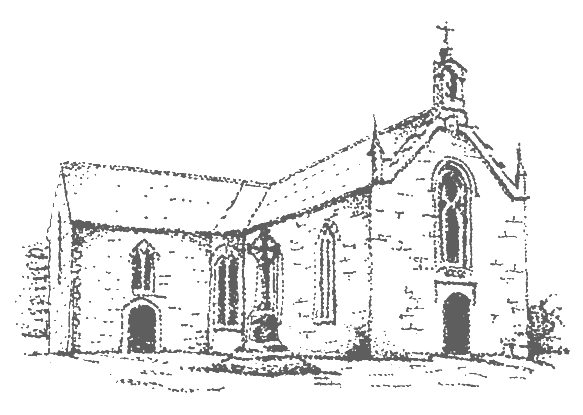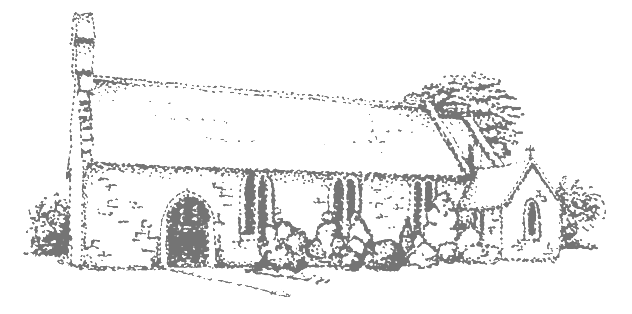Parish History
Askeaton-Ballysteen lies on the southern bank of the Shannon Estuary and astride the mouth of the river Deel. Formerly it was two separate parishes but it has been united for a number of centuries. The current parish is about 10 miles long by three-and –a-half miles wide and consists of some 750 homes.
Askeaton derives from the Old Irish name, Eas Geiphtine, meaning the cataract or waterfall of the Geiptine, a celtic tribe that settled there in pre-Christian times. Some have held that the tribe derived its name in turn from the Irish céad tine, meaning ‘ a hundred fires‘, from the flickering lights of the heavens reflecting on the cascading water at night. A village from Bronze Age times may have been one of the earliest settlements here.
While the Fort of Geiphtine was reserved to the Kings of Munster at Cashel in the fifth century little is known of the place before 1199 when Askeaton Castle was built by Norman settlers on a little island in the river Deel. The Fitzgeralds, Earls of Desmond, made Askeaton Castle their principal residence from 1348. However, most of the surviving structure, which resembles a manor rather than a castle, dates from the fifteenth century. After the wars of the Catholic Confederates the castle was finally dismantled by the Cromwellian forces of Captain Axtell in 1652. Thereafter, Askeaton declined as a port and as a political, military centre. However, the town sent two members to Parliament from 1608 until 1800. Present-day Askeaton still resembles a medieval town with its winding, narrow streets and 16th century bridge.
Askeaton Friary or Abbey, a Franciscan monastery, was probably founded in 1389 by Gearóid Iarla, poet and Fourth Earl of Desmond. It contained the ancestral tomb of the Fitzgeralds. During the Desmond rebellions of the sixteenth century the commander of the English forces, Nicholas Malby, plundered the abbey in 1579 and put many of the friars to death in revenge for failing to take the castle. The abbey is still an impressive ruin and has many interesting features: the fine limestone cloisters, the stone carving of St. Francis, the burial site of two of the Irish martyrs, Bishop Partick O Healy and Fr. Conn O Rourke, the Stephenson tomb, and the inscription to Martinez de Mendoza of Spain, the ‘Askeaton Pirgrim’, who died in 1784.
The oldest remaining structure in Askeaton is the belfry of the original church founded by the Knights Templar in 1298. The church was dedicated to, 'St. Mary', as is the parish church today. The belfry, unusual in shape in that it has a square base and an octagonal summit, is now incorporated into the church of St. Mary’s Anglican Church. The local poet, Aubrey de Vere, is buried in the grounds.
In more recent centuries the Catholic Church stood in the grounds of the old abbey until it was destroyed in 1847 by a fire that started in the nearby mill. One man perished in the fire at the mill and the destruction of two such important buildings caused severe hardship to the population of the time. The new Catholic Church of St. Mary’s was opened in 1851 at the western end of the town and it was interiorly re-designed for the modern liturgy in 1977.
Ballysteen was once known as Iverus, from the original celtic tribe of Uibh Rossa who lived there. The most prominent landmark in Ballysteen is Beagh Castle, which stands on the banks of the river Shannon. It is reputed to have been built by the Fitzgealds as an outpost fortification in the thirteenth century. Beagh Church, so called though actually in the townland of Ballyaglish, was the parish church until the sixteenth century when it fell into disuse because of the Penal Laws. The present parish church of St. Patrick’s was built in 1861.
Parish Priests of Askeaton 1704 - Present
1704-? Fr. David Lacy
?-1763 Fr. Thomas Dillane
1763-1763 Fr. William Neilon
1763-1780 Fr. Thom. Humphrey Sullivan
1780-? Fr. John Fitzgerald
?-1791 Fr. Robin Walsh
1791-1814 Fr. Thomas Meager
1814-1818 Fr. William Cronin
1818-1824 Fr. Thomas O'Hanlon
1824-1836 Fr. Michael Fitzgerald
1839-1860 ** Fr. Edward Cussen
1861-1863 Fr. James Raleigh
1864-1871 ** Fr. James Hickey
1871-1886 Fr. Daniel O'Connor
1886-1890 Fr. Joseph Bourke
1890-1892 Fr. William Higgins
1892-1892 Fr. Denis Shanahan
1892-1908 * Fr. Edmund Treacy
1908-1915 Fr. John Lee
1915-1940 * Fr. Timothy Reidy
1940-1946 * Fr. Patrick Casey
1946-1948 Fr. William Harty
1948-1953 * Fr. Denis O'Donnell
1953-1963 * Fr. Cornelius O'Sullivan
1963-1969 * Fr. John Carroll
1969-1985 * Fr. Thomas Kirby
1985-1997 * Fr. Michael O'Connor
1997-Present Fr. Sean O'Longaigh
* Buried in church grounds, along with Fr. Joseph Guiry C.C.
** Buried under the main aisle of the church
Parish Anthem
PARISH ANTHEM
By Michael D. Ryan.
In eighteen hundred and fifty one
When famine's winter fouled the air,
with Ireland's children on their knees,
What hope was there! What hope was there!
Their Abbey church razed to the ground,
The ashes scattered far and wide,
How can our people rise again?
How can their humble faith survive?
Who doubts the courage of the Gael
When Patrick's spirit leads us on?
We're in our Virgin Mother's care,
Our Christian faith is alive and strong
New walls did rise up stone on stone,
And God's own house did swiftly grow.
The willing workmen gave their sweat,
Their courage now we surely know.
The money came from rich and poor:
The crispy note, the copper coin.
Their legacy still stands today,
Still stands the rugged test of time.
Who doubts the courage of the Gael
When Patrick's spirit leads us on?
We're in our Virgin Mother's care,
Our Christian faith is alive and strong
That legacy is still our gift.
Far more, much more than mortared walls,
They passed to us a living faith
That down the generation calls,
And if we're worthy to receive,
It is our task and ours alone
To keep and pass the gift along,
As sturdy as this church of stone.
Who doubts the courage of the Gael
When Patrick's spirit leads us on?
We're in our Virgin Mother's care,
Our Christian faith is alive and strong



